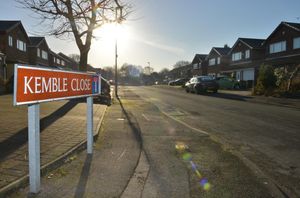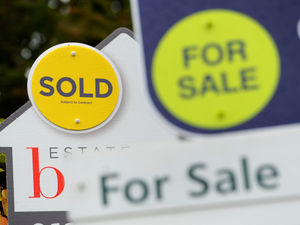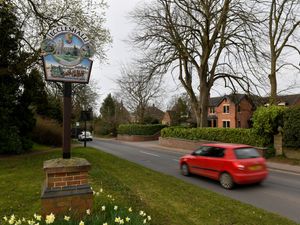Willenhall Gasworks: Housing estate found NOT to be contaminated 12 years after experts said it was
A housing estate built on the former Willenhall Gasworks site is NOT contaminated, it has officially been confirmed.

For more than a decade residents of the Stonegate and Trent Park estates have been led to believe their homes were built on contaminated land, which they said has lead to warnings over falling house prices and not to grow vegetables in their gardens.
But it has now been revealed that the land is in fact not contaminated, and is in no worse state than many other former industrial sites in the Black Country.
Walsall Council has thanked residents for their support and arranged a special cabinet meeting for next week to discuss the site and to get it taken off the 'contaminated land' list.
A residents-only meeting has also been arranged to allow them to quiz council officers.
'The matter can't wait'
Councillor Mike Bird, the leader of the council said: “The homeowners and other residents who have been affected by this issue for more than 10 years now are very firmly first and foremost in our decision-making.
"A special meeting of cabinet has been called to consider this very recently received expert advice, because the affected residents deserve to have this matter considered now, rather than wait for the next scheduled meeting of cabinet – for these residents, this matter can’t, and shouldn’t, wait.”
In what is one of Walsall's longest-running sagas, houses began to pop up on the site in the 1970s after the gasworks had shut a decade earlier.
It is believed the site was not properly cleared before builders moved on, with heavy metals, tars and a gas manufacturing by-product called Blue Billy said to be on the land.
Walsall Council first revealed its fears in 2007, before officially listing the land as contaminated in 2012 following a lengthy investigation and expert advice.
But in 2015 doubts began to surface over whether the land was actually contaminated or not.
Remediation
Walsall Council served a remediation notice on Jim 2 Limited, the company which it claimed was behind the contamination, to clean the site up at a cost of £2.5 million. The notice was appealed and taken to the planning inspectorate, which launched a public inquiry.
This inquiry concluded in 2017 and revealed it did not think the land met the Secretary of State’s Guidance to constitute ‘contaminated land’.
In response Walsall Council ordered Land Quality Management Ltd to carry out more tests on the site, which have now concluded that the land is in fact not contaminated.
Councillor Bird said: "The final report from LQM found that the toxicology levels in the soil samples are insufficient to pose a ‘Significant Potential of Significant Harm’ as laid down by the Environmental Protection Act.
“There are potentially contaminative substances in the soil, which is not uncommon on post-industrial sites such as this, however it is not at a level where there is a significant possibility of causing, or which causes, significant harm and therefore, it can no longer be considered to be ‘contaminated land’."
Residents have been provided with an information pack and a residents’ meeting has also been arranged to give those who wish to do so an opportunity to ask questions.
A council spokesman said: "Walsall Council takes its statutory duty to investigate and assess land which may be contaminated extremely seriously. Based upon the information provided at the time the Council considered that it had no other choice but to make the ‘contaminated land’ determination. Now this new evidence clearly shows that there is no significant potential of significant harm to human health, which is the legal test.
"The Council acknowledges that this has been a long and very complex process for the residents, and wishes to thank them for their continued support in working with the Council, something which the Council is keen to continue with."




